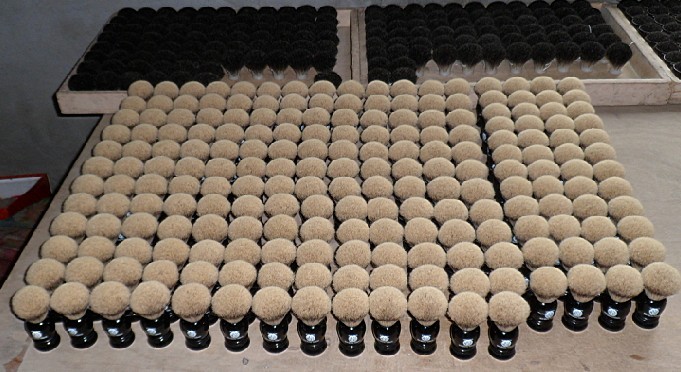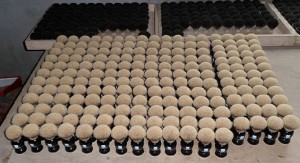First of all, I have no idea who came up with this idea. It probably stems from the fact that high end brushes are advertised as “hand made” and “hand graded”. While this is very true, the same is true of even the cheapest boar or badger brush.
The simple fact of the matter is that there is no such thing as a hair grading machine. There are several mechanical devices that helps the worker make knots, such as a dome shaped tool that helps form the tips of the hairs into a bulb shape. The other machine commonly
used is a hair cutter which cuts the bottom of the knot.
The same is true with badger hair grading. If someone can even come up with a way that would eliminate hand grading by a human, please enlighten me. As it stands there is no such machine and the technology is years away. First, we would need to develop a method to measure softness of hair. Next, we would need to develop a method for a machine to determine which color is best. Then we would need to program a robotic arm or something to pluck and shear the hairs off according to grade.
Look, clearly we don’t have such machine. All hair is graded by workers in China. Even Simpsons hair. To my knowledge no European manufacturer purchases the pelts directly. As such they have only limited control over their hair grades. Shocking, right? But it’s true.
The corners that are cut when dealing with the lowest grades of boar or badger hair is trimming. Instead of painstakingly (although it really only takes a few minutes) forming the knot into a nice bulb shape, the hairs are roughly shaped and the stray hairs are trimmed into the final shape. These cut ends are not soft on your face. Not terribly pleasant.
There is no machine that grades hair, humans do it all. And while there are machines that forms and glues the knot, the hair and glue must be manually loaded, sorted and trimmed. So, this myth is partially busted. As to whether Chinese knot makers make their knots by machine while European knot makers make their knots by hand, that may be true. But considering that the only European knot makers known to this author are Simpson/Vulfix, Semogue, & Vie Long, there really isn’t much to say. Chinese workers can do everything any other worker in the world can do. They just get paid less. Which leads to the question: if labor costs are so low in China, why not make everything by hand?


